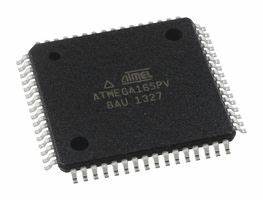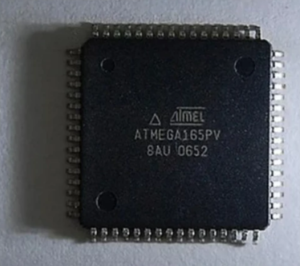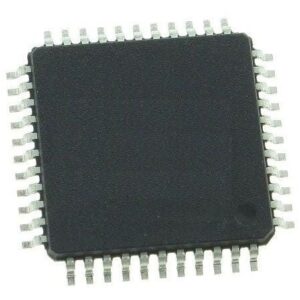 Attack ATmega165PV Microcontroller Flash Memory
Attack ATmega165PV Microcontroller Flash Memory
Attack ATmega165PV Microcontroller Flash Memory and readout atmega165pv secured avr chip flash program, then engineer can extract the source code of locked atmega165pv microprocessor;

Attack ATmega165PV Microcontroller Flash Memory and readout atmega165pv secured avr chip flash program, then engineer can extract the source code of locked atmega165pv microprocessor
Port E is an 8-bit bi-directional I/O port with internal pull-up resistors (selected for each bit). The Port E output buffers have symmetrical drive characteristics with both high sink and source capability. As inputs, Port E pins that are externally pulled low will source current if the pull-up resistors are activated. The Port E pins are tri-stated when a reset condition becomes active, even if the clock is not running.

atacar la memoria flash del microcontrolador ATmega165PV y leer el programa flash de chip avr seguro atmega165pv, luego el ingeniero puede extraer el código fuente del microprocesador atmega165pv bloqueado
Port F also serves as an 8-bit bi-directional I/O port, if the A/D Converter is not used. Port pins can provide internal pull-up resistors (selected for each bit). The Port F output buffers have sym- metrical drive characteristics with both high sink and source capability. As inputs, Port F pins that are externally pulled low will source current if the pull-up resistors are activated to break mcu atmega165 flash memory protection. The Port F pins are tri-stated when a reset condition becomes active, even if the clock is not running. If the JTAG interface is enabled, the pull-up resistors on pins PF7(TDI), PF5(TMS), and PF4(TCK) will be activated even if a reset occurs.

break atmega65pv microcontroller fuse bit and readout embedded heximal file from its flash memory, copy firmware to new original microprocessor atmega165pv
Port G is a 6-bit bi-directional I/O port with internal pull-up resistors (selected for each bit). The Port G output buffers have symmetrical drive characteristics with both high sink and source capability. As inputs, Port G pins that are externally pulled low will source current if the pull-up resistors are activated to recover atmega168pv mcu code. The Port G pins are tri-stated when a reset condition becomes active, even if the clock is not running.
Reset input. A low level on this pin for longer than the minimum pulse length will generate a reset, even if the clock is not running. The minimum pulse length is given in Table 26-4 on page 302. Shorter pulses are not guaranteed to generate a reset;